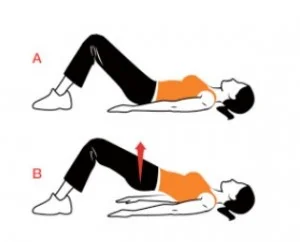Tips and Tricks: Preventing and Healing Volleyball Injuries (Part 1)
We all know that volleyball can be dangerous and wreak havoc to our bodies. Does this stop us from playing? Usually not, but sometimes it can slow us down or make us take time off the court. We decided to do a two-part article in regards to preventing and treating injuries associated with volleyball.
Part one comes from Dr. Dylan Murray, Chiropractor at Spine and Sport in Santa Cruz. Spine and Sport specializes in treatment and rehabilitation of sports related injuries and overall maintenance of body.
Because volleyball has little contact with other players, most injuries are associated with overuse. According to Dr. Murray, here are the most commonly injured body parts:
Ankles
Ankle sprains are the most common injury in volleyball due to the repetitive jumping and landing required. Inversion ankle sprains are the most common in which the ankle rolls outward while the foot rolls inward. The only factor that increases your chances of getting an ankle sprain is having a previous ankle sprain. It is therefore important to prevent these from occurring or from reoccurring.
Feet and walking: Determine if your foot pronates excessively (inward rolling of the foot when walking). This may increase risk. Do you have flat feet? People with flat feet tend to overpronate. Custom-fitted orthotics when off the court can be helpful for this type of issue. The best prevention typically involves proper fitting footwear and lacing (if playing indoors) and learning proper landing techniques. Check with a coach to make sure your landing techniques are absolutely correct.
Ankle Sprains: If ankle sprains are a reoccurring problem, a proper rehabilitation plan is usually necessary. It is important to include exercises that will help stabilize the ankle joint after any ankle injury. Following an ankle sprain, strengthening exercises should be performed once you can bear weight comfortably and your range of motion is near full. The foot and ankle contain a high amount of mechanoreceptors, which are receptors in your body that send information to the brain on where your body is in space. After repeated ankle sprains, mechanoreceptors have a more difficult time telling your body where your foot is in relation to the rest of your body and it tends to be a continuous cycle of repeated injuries. Rehabilitation to these types of injuries is called neuromuscular rehabilitation and typically involves using balance exercises as a way to re-establish proper foot and ankle mechanics. Using a wobble-board, bosu-ball, a trampoline, or basically any unstable flooring is necessary for this type of rehab.
A basic ankle sprain protocol: start rotating your ankle as described here right after an ankle sprain. Once you finish one step without pain, move to the next.
- Range of Motion (ROM) process:
- Down Position
- Up position
- Inward Position
- Outward position
- Down and In Position
- Up and In Position
- Down and out Position
- Up and Out Position
- Resisted ROM: Adding a band for resistance with the above ROM.
- Balance: Try each of these positions for 30 seconds.
- Standing on one leg with eyes open.
- Standing on two legs with eyes closed.
- Standing on one leg with eyes closed.
- Standing on uneven platform with both legs and eyes open
- Standing on uneven platform with both legs and eyes closed
- Standing on uneven platform with one leg and eyes closed
- Standing on uneven platform with one leg and eyes open
Another tip to try at home: Self myofascial release for the talo-fibular ligament (the most common ligament sprained in the ankle).
By feeling the bump on the outside of your ankle and coming to the space just in front and inward, there is a small groove called the sinus tarsi. By rubbing in the groove in a crisscross fashion for 1-3 minutes with medium pressure, you can help the talofibular ligament heal by reducing the inflammation in the area. Be careful, this area can be especially painful afterwards.
In Office Remedies: In Dr. Murray’s office, he performs an ankle manipulation that reestablishes the ankle bones to allow for proper movement after an ankle sprain. This helps reduce inflammation by giving more flexibility to the ankle joint.
Surprisingly, in Dr. Murray’s office most knee problems are associated with either foot or hip dysfunction.
Knees
The most common injury he sees in his office is 'jumpers knee', which is inflammation of the patellar tendon. This tendon is located just below the kneecap and is irritated from activities such as running, and (you guessed it), jumping.
Balance: Maintaining balance of the muscles that attach to the knee helps ensure keeping the front of the legs strong (the quadriceps for the thighs, and the muscles of the "shins"). http://www.physioadvisor.com.au/8290850/quadriceps-strengthening-exercises-vmo-strengthe.htm is a good place to start.
Flexibility: It is also important to maintain good flexibility in the back of the legs (hamstrings and calves). Check out this article for some helpful ideas: http://www.livestrong.com/article/38890-increase-hamstring-flexibility/
Strengthening: Strengthening the gluteal (or butt) muscles also helps the knee. Dr. Murray’s favorite two exercises are "monster walks" and "supine glute bridges" (see pictures).
monster walks
supine glute bridges
Tips to try at home: The ankle protocol above is useful for knee issues as well.
In addition to the tips above, use 'myofascial release' on the quadricep tendon by finding the spot just above your kneecap and rubbing in a criss-cross fashion (see pictures). This can help reduce strain on the quadriceps.
In Office Remedies: If there is swelling or locking of the knee joint, have your knee evaluated by a qualified healthcare provider.
myofascial release
Shoulders
This is the most common “overuse” injury Dr. Murray sees in his practice when it comes to volleyball. The shoulder joint is considered the most mobile joint in the body. With this increased mobility, this also makes the shoulder joint the least stable joint in the entire body. There are often many soft tissue related injuries associated with overuse of this very unstable joint such as tendinitis, bursitis, and impingement syndrome.
Posture: The best prevention in Murray’s opinion is maintaining good posture. Most people he encounters, when measuring posture, tend to slouch forward in the shoulder region, causing excess stress on the shoulder and making one more susceptible to injuries in that region. In his office, he sees bad posture and shoulder pain going hand and hand many times. Here are tips on how to maintain good posture from the American Chiropractic Association https://www.acatoday.org/content_css.cfm?CID=1452.
Lower Back
Lower back pain or LBP is very prevalent. Preventing LBP is very difficult, since experts estimate that as many as 80% of the population will experience a back problem at some time in our lives, and there are many causes of LBP.
A basic outline for decreasing your chances of having low back pain include:
- Maintain a healthy diet and weight.
- Remain active.
- Avoid prolonged inactivity or bed rest.
- Warm up or stretch before exercising.
- Maintain proper posture.
- Wear comfortable, low-heeled shoes.
- Sleep on a mattress of medium firmness to minimize any curve in your spine.
- Quit smoking. Smoking impairs blood flow, resulting in oxygen and nutrient deprivation to spinal tissues.
- Work with your doctor of chiropractic to ensure that your computer workstation is ergonomically correct.
Most cases of back pain are mechanical or non-organic—meaning they are not caused by serious conditions, such as inflammatory arthritis, infection, fracture or cancer.
In Office Remedies: Chiropractic and/or physical therapy are the two best options for dealing with low back pain in Murray’s opinion.
If pain persists more than a few weeks after this point, you should have this injury evaluated by a qualified healthcare provider to determine your rehabilitation plan and decision for a safe return to participation.
For more information on Dylan Murray, DC, check out http://www.scspineandsport.com/. He also appears at many of the No Attitudes tournaments to provide adjustments if you want to ask him any questions!
Editor's note: DigSantaCruz is not responsible if you choose to try any of the methods found in this article. Please use your own discretion when attempting any of the above tips & tricks.





